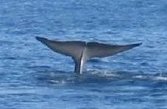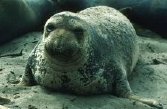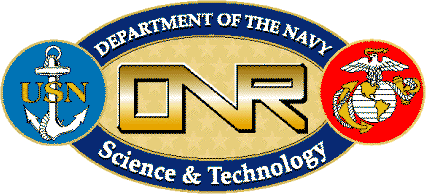News!
- November 2007
- All inventory of Bioacoustic Probes is now sold. Development of the new design is coming along, the first prototypes are in assembly as of this writing (5 November 2007). However much effort remains ahead, and it is too soon to quote specifications, options, pricing or delivery. At present we are hoping to have the design commercially available in the second half of 2008.
- March 2006
- Acoustimetrics is pleased to announce Office of Naval Research support for development of a new, wideband acoustic recording tag. The new design will be capable of sampling rates at least up to 200 kHz, with expanded storage capacity and faster data offload. We also hope to move from a 2D to a 3D accelerometer for orientation sensing, and to add compassing ability as well.
We hope, but cannot guarantee, that a production version of the new instrument will be commercially available by the end of 2007.
To focus our resources on this new development, Acoustimetrics will no longer take orders for construction of new Bioacoustic Probes. We are however building seven units to be available for sale between now and the release of the new design. These new units will have an assortment of pressure transducers (500-m, 1000-m, and 2000-m) and hydrophone sensitivities (-172 dB
or -190 dB). All will have 2D accelerometers and 1-GB storage units.
We will stock these seven units until they are sold, but will not build any more.
- March 2006
- New firmware 1.5.2 has been released; see the release notes. This firmware is
very highly recommended for B-Probes with firmware versions 1.5.0 or 1.5.1, as
it fixes a timestamping bug introduced with those firmware revisions.
- November 2005
- New firmware 1.5.0 has been released; see the release notes. Two Bioacoustic
Probes shipped this week with very sensitive pressure transducers, good only to
about 55 feet but capable of resolving
vertical changes on the order of millimeters; this took some redesign effort to
avoid damaging the pressure transducers during construction. Last but not least,
indications are that we will be supported to redesign the Bioacoustic
Probe for much faster sample rates. Stay tuned.
- March 2004
- Two Probes have been successfully pressure tested to 2000 m equivalent depth.
This verifies that the design should be capable up to this depth. From here on,
every Probe made will be pressure-tested to the full-scale range of its pressure
transducer or to 2000 m (3000 psi) whichever is lower.
- December 2003
- The production version is available build-to-order with a delivery
time of 16 weeks. We plan to carry limited inventory in 2004
so that at least a few units can be available immediately. Field
experience from the summer of 2003 has been applied to both
hardware and software, improving reliability and ease of use.
The maximum sampling rate has been increased from 15 to 20 kHz
at room temperature; at near-freezing temperatures sampling rates
under 10 kHz are now usually sustainable with a typical
1/2-AA lithium battery.
Why is this capability important?
Awareness of the potential effects of human-generated
sound on protected marine wildlife has
heightened over the last decade. Unfortunately our understanding of
such effects remains dim. To focus conservation efforts where
they will do the most good,
it is urgent that we find ways to assess protected species' acoustic
sensitivity.
Historically, the only practical means to assess marine
animals' response to sound have been either captive studies
at a laboratory or distant observation of selected groups of
calling or surfacing animals. Each approach has merits, but
neither allows the scientist to study a free-ranging
individual's response to accurately quantified sound
exposure. The way to obtain this information is to
place a sound and behavior recorder directly on a
free-ranging subject; until
recently, however, underwater acoustic recorders could not be made
small enough to be attached to wildlife.
Return to top
The origin of bioacoustic tags
The first acoustic recording tags were applied in 1995
by a partnership of the
University of California at Santa Cruz,
the
Woods Hole Oceanographic Institution
(both supported by the
Office of Naval Research),
and the
Monterey Bay Aquarium Research Institute.
These experiments with northern elephant seals
yielded surprising results,
showing that the tags' acoustic records contained not only
measurements of sound exposure, but of potential
response indicators such as respiration and cardiac function
as well.
Since the success of these early experiments, studies
using bioacoustic tags have expanded. At least
three current designs have been applied with free-ranging
protected species: the
DTAG
from the
Woods Hole Oceanographic Institution;
an
ultrasonic recorder from the
University of Århus in Denmark;
and the Bioacoustic Probe.
Return to top
The mission of the Bioacoustic Probe
The
complexity of bioacoustic tags renders them impossible to develop for
small biology-oriented research groups
with few engineering resources. Even larger research
groups with engineering capability must focus on
advancing immediate scientific goals, not on
developing instruments for broad applications.
The Bioacoustic Probe project aims to
provide off-the-shelf bioacoustic tag technology
for application with large
fish, whales, and everything in between. The goal is to
enable field biologists, especially those without access
to engineering support, to study questions
of acoustic sensitivity.
Return to top
Concept of operation
Using a PalmOS-compatible
personal digital assistant, the user programs the B-Probe with
the sampling schedule and rate desired. No
other equipment is necessary to prepare
the B-Probe, allowing programming to take
place in difficult outdoor settings, such as a kayak, that would be unsuitable
for heavier or more delicate equipment.
The B-Probe is then
attached to a subject or placed in a recording
location. When recording is complete,
the B-Probe must be recovered. The acquired
data are then downloaded to a personal computer via infrared transmission.
Return to top
Development
The breadth of the B-Probe's mission
demanded intense design focus on miniaturization,
reliability, and ease-of-use, in addition to
the essential data acquisition functionality.
Initial development
of the B-Probe required
over three years of effort. A new computer
platform was designed, a new operating system
was created, and application software had to
be written for both the tag and the PalmOS.
The following summarizes the major development
components:
- New 3-volt hardware platform
- A new hardware platform
was developed from scratch around the
Motorola "DragonBall" 68EZ328 processor,
an extreme-low-power
device with an industry-standard architecture,
and the
M-Systems "DiskOnChip",
a solid-state mass-storage device.
- New 3-volt hydrophone preamplifier
- Because the entire design relies on a 3-volt supply,
a new hydrophone preamplifier had to be designed
that could operate with this low voltage while
remaining very quiet and pulling less than
a milliampere of current.
As part of the
Office of Naval Research's
focus on technology transfer, hydrophones
with this preamplifier are now commercially
available from
High-Tech, Incorporated.
- New operating system
- To allow maximum flexibility and power conservation, a new operating
system was written from scratch to run on the
tag platform.
- Industry-standard infrared communication
- An
Infrared Developer's Association (IrDA)
object-exchange protocol was incorporated
into the operating system to maximize compatibility
with other infrared devices.
- Palm commanding
- Graphical user-interface software
was written for the
Palm personal digital assistant to allow simple commanding of the B-Probe,
even in harsh field conditions.
- Hard polyurethane encapsulation
- Complete encapsulation in polyurethane protects the
instrument from damage at sea or in handling, and
simplifies application. The polyurethane passes
acoustic signals and infrared communications, so no
external connectors or wires are necessary. While
encapsulation confers the advantages of reliability
and ease-of-use, it also requires significant effort
to be sure that all components can tolerate the
ocean pressures experienced by the tag.
- Field-replaceable battery
- The B-Probe runs on a single lithium 1/2-AA cell battery.
A small pressure housing embedded in the polyurethane resin
protects the battery while allowing it to be changed in the field.
Return to top
Milestones
- June 1999
- The Office
of Naval Research initiates development support for the
Bioacoustic Probe.
- October 2000
- The first prototype circuit boards are fabricated.
- March 2001
- Four prototypes are deployed, inside pressure housings,
as seafloor recorders off Maui to monitor ambient
sound levels from humpback song (in collaboration with
the
Hawaii Institute of Marine Biology).
- August-October 2001
- Unsuccessful efforts to attach the B-Probe, inside
a pressure housing, to blue whales.
- November 2001
- A prototype is encapsulated in resin for the first time.
- May 2002
- Tag software feature set completed, version 1.0.
- June-July 2002
- Several successful attachments to blue whales off
the California coast (in collaboration with the
Scripps Institution of Oceanography,
Cascadia Research,
Whale Acoustics,
and
Cetacean Research Technology).
- September 2002
- Application with northern fur seals at the
Pribilof Islands by
Hubbs-SeaWorld Research Institute.
- December 2002
- New electronic design for production tags completed, providing
tilt sensing and much smaller size.
- July-August 2003
- Several successful attachments to blue and fin whales
off the California coast (in collaboration with Scripps,
Cascadia, Whale Acoustics, and CRT as before)
Return to top
References
Burgess, W.C., P.L. Tyack, B.J. Le Boeuf, and D.P. Costa (1998). A programmable
acoustic recording tag and first results from northern elephant seals.
Deep-Sea Research part II 45(7), 1327-1351.
Fletcher, S., B.J. Le Boeuf, D.P. Costa, P.L. Tyack, and S.B. Blackwell (1996).
Onboard acoustic recording from diving northern elephant seals. Journal
of the Acoustical Society of America 100, 2531-2539.
Johnson, M.P., and P.L. Tyack (2003).
A digital acoustic recording tag for measuring the response of wild marine mammals to sound.
IEEE Journal of Oceanic Engineering 28, 3-12.
Madsen, P.T., R. Payne, N.U. Kristiansen, M. Wahlberg, I. Kerr, and B. Møhl (2002).
Sperm whale sound production studied with ultrasound time/depth recording tags.
Journal of Experimental Biology 205, 1899-1906.
Return to top
Content last updated November 2007




